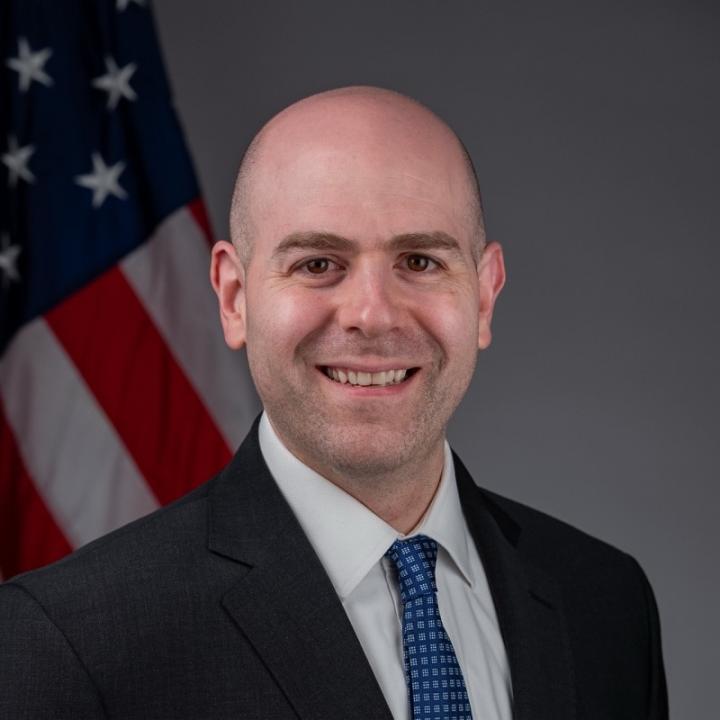
The newest FOMC-member Stephen Miran broke with Fed tradition by refusing to put his dissent in writing, opting instead to spell it out in a speech at the Economic Club of New York. Markets see his objection as nothing special, with rate decisions remaining a team-effort.
Stephen Miran is wasting no time making his mark at the Federal Reserve. In his first public speech as a governor, Miran said monetary policy is “well into restrictive territory,” with short-term interest rates roughly two percentage points too tight.
Miran wants a faster pace of cuts than Chair Jerome Powell and his other colleagues support, and made clear he won’t soften his views just to preserve the appearance of unity.
“I’m not going to vote for something I don’t believe in, just for the sake of creating an illusion of consensus where there is none,” Miran said Monday at the Economic Club of New York, a favored stage for Fed officials to outline their views. The appropriate fed funds rate, he believes, should be closer to 2 percent to 2.5 percent, well below the current 4 percent to 4.25 percent.
Miran, a Harvard-trained economist and Trump appointee to a short-term seat, dissented at last week’s meeting in favor of a half-point cut, against the quarter-point reduction backed by all other members (11) of the FOMC-committee. He has promised to keep pressing for more cuts, including “a series of ‘50s’ to recalibrate interest rates.”
Traditionally, dissenters publish short written statements after a meeting. Miran rejected that, saying he wanted to give a full accounting for his views at the event in New York.
Investors, however, are not convinced Miran’s dissent is going to change much for markets.
Joe Davis, chief economist at Vanguard, told Investment Officer that one governor cannot shift the path of policy. “At the end of the day, it’s a committee,” Davis said. “One member’s vote isn’t going to materially change decisions.”
Davis said differences of opinion are normal, especially in the current environment. “We have a labor market that’s slowing and inflation that’s still elevated. That naturally produces more disagreement inside the committee,” he said. “This is no different than patterns we’ve seen in the past, and it’s healthy.”
Luc Aben, chief economist at Van Lanschot Kempen, noted that while Miran’s call for more cuts was unsurprising and “likely more political than economic”, the more important shift has come from Christopher Waller and Michelle Bowman, two board members who had previously advocated for a 50 basis point interest rate cut, but now voted in favor of a 25 basis point cut. Both were appointed by Trump during his first term in office. That change, Aben argued, takes some of the sting out of earlier suspicions that their dovish stance was driven by ambitions to become the next Fed chair.
Overall, the median Fed projection now points to two additional quarter-point cuts in 2025, one more than forecast three months ago, but only one further move in 2026. Aben calls it a “cautious stance” despite heavy political pressure for deeper easing. Fed funds futures continue to price another quarter-point cut at the next meeting, not the 50 basis points Miran favors.
No political influence
Miran insists his views are driven by economics, not politics. He told his New York audience that Trump had only called once to congratulate him and never discussed policy.
He argues that tighter border policy and more deportations are helping reshape the economy by slowing population growth. With fewer new arrivals, he said, pressure on rents will ease and labor force expansion will cool.
Miran pointed to immigration as a key driver of rent and population trends. “The US population has grown by around 1 percent annually in recent years, driven in large part by illegal immigration,” he said. “Assuming some overcounting, it is plausible to me 2 million illegal immigrants will have exited the country by year end, thereby reducing annual population growth from 1 percent to 0.4 percent.”
Weaker population growth, in his view, eases pressure on housing and slows the expansion of the labor force. Both effects tend to damp inflation, which makes it easier for the Fed to justify lower interest rates.
On trade, he pushed back against the view that Trump’s tariffs are inflationary. He argued instead that the revenue they generate boosts national saving and lowers the neutral rate of interest.
Rates outlook
Vanguard expects the Federal Reserve to cut policy rates by at least another quarter-point this year, followed by one or two more reductions in 2026, totaling about 100 basis points. That outlook is more cautious than equity markets, which according to the CME Fedwatch tool are betting on more cuts.
For investors the big question is how much of the slowdown is demand-driven versus supply-driven, according to Davis. Retirements and immigration have reduced labor supply, while weaker demand has also cooled hiring. “We estimate about 60 percent of the slowdown is supply-related. But clearly demand has softened too, which makes modest easing appropriate.”
If the Fed misjudges the balance, he warned, it could reignite inflation. “If policymakers assume it’s all supply and keep cutting it by 100 basis points, that’s not good for future inflation.”